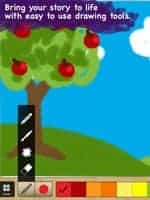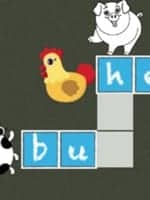Alan November and Brian Mull article on Web Literacy
Why more schools aren’t teaching web literacy—and how they can start
Fourteen years after we first published ‘Teaching Zack to Think,’ here’s a new three-part framework for making sure students are internet savvy
By Alan November and Brian Mull
The advanced researcher can take Diigo much further. For example, while Zack might have found a few valuable sites about the Holocaust on his own, he might want to connect with others who have been tagging material on the Holocaust for years. To do this, Zack can use Diigo to search for online groups that are sharing resources about the Holocaust. Currently, there are nearly 200 groups sharing information on this topic! A little time spent searching through these groups might prove to be more productive than spending the same amount of time searching with Google.
Additionally, if Zack has classmates who are working on this paper with him, they can all agree to use a specific tag, known only to them, within each of their own accounts. From there, a simple search on Diigo for this tag would provide each student with the resources found by all.
One of the greatest benefits of using such a tool is that the students’ libraries follow them from class to class and from year to year. Therefore, a student who studies biology as a part of the seventh-grade curriculum can return and add to the resources found when taking biology again in high school and then in college.
For teachers who are interested in using this organizational tool with their students, we highly suggest signing up for an educator account. Doing so will allow you to create class accounts easily for all of your students and also immediately makes them part of a class group for easy sharing.Attend Alan November’s ed-tech conference and get $50 off the cost of registration!
Sharing and making sense of information
We are currently witnessing an explosion in the use of social media on the web. For many, this use is for personal purposes—keeping track of friends, interacting with various types of media resources, and sharing interests with others. But another segment of the population is making use of social media to advance their own learning. Services like Twitter, Facebook, Pinterest, and Google+ are allowing connected learners to develop personal learning communities of like-minded individuals who are sharing rich learning resources with one another on a variety of topics. Those who are using these personalized networks insist that some of their most important learning opportunities take place online with individuals they have never actually met.
Previously, researchers were confined to local research groups and formal classroom interactions. Beyond these organized efforts, their connections with others were confined to one-on-one phone calls or group eMail messages that bounced around among participants. However, online social networks are allowing adult and student researchers to share and make sense of knowledge they collect in a more fluid manner. Through these interactions, researchers are able to gain a broader perspective from individuals with varying backgrounds.
Looking at Twitter, for example, we can use a similar organizational method that we saw with Diigo to find focused information on topics of interest. Twitter’s method is simply a short word or phrase (like the tags in Diigo) preceded by the “#” symbol. This is called a hashtag. Searching through Twitter using a hashtag allows users to get past all of the shared information not related to the topic at hand.
To do a search like this, first you would need to find an appropriate hashtag. For this example, we’ll use a hashtag from our Popular Education Hashtagsdocument. We’ll select #stem for STEM education. Now, go to Twitter’ssearch tool. Type #stem in the search box as the query. Immediately, everything on Twitter has been filtered out except for content being shared about STEM-related fields. This content would include helpful websites, articles, or answers to others’ questions. Now, let’s say you want information having to do with STEM careers. At the top of the search results, click the gear button and go to the advanced search page. There, you will be able to add careers to your query, thus doing some further streamlining.
For student researchers, understanding how to use methods like this and having the ability to connect to experts and peers who deeply understand specific areas of knowledge can add valuable perspective and broader connections to a topic of research. Even from early grades, we recommend having a class Twitter account. We also recommend having the aforementioned hashtag handout in a public place near a classroom computer.
As questions come up in class, have specific individuals send out these questions and request further information from the “Twittersphere.” As they do this, encourage students to identify the best hashtag to target their queries. Then, as students begin to develop new content that brings together what they have learned, have them share their thinking and their products with others—again, using the appropriate hashtags. In time, this will become second nature for students and will demonstrate how these tools can be used ethically and educationally.
For Zack, sharing and inquiring about the research he found on the professor’s website using the hashtag #holocaust could have been quite eye-opening. Through making powerful connections and digging deeper into the content he was learning with others who share a passion for this topic, Zack could have gained further insight on the legitimacy of the information he found.
Conclusion: Good research hasn’t changed
In the 14 years since the original writing of “Teaching Zack to Think,” the web has seen dramatic changes in the quantity and variety of information to which we all have access. What hasn’t changed is the need to learn how to properly navigate and make the most of these resources. We must remember that good research is still good research. The technology we access each day hasn’t changed our need to bring rigor and purpose into the work that students do. Understanding the three pillars of modern-day web literacy will take students to new levels of ability. By helping students like Zack further develop skills in finding, organizing, and making sense of information, whether in books or online, we will be preparing them for greater opportunities to thrive—no matter what changes technology has in store in the future.









































